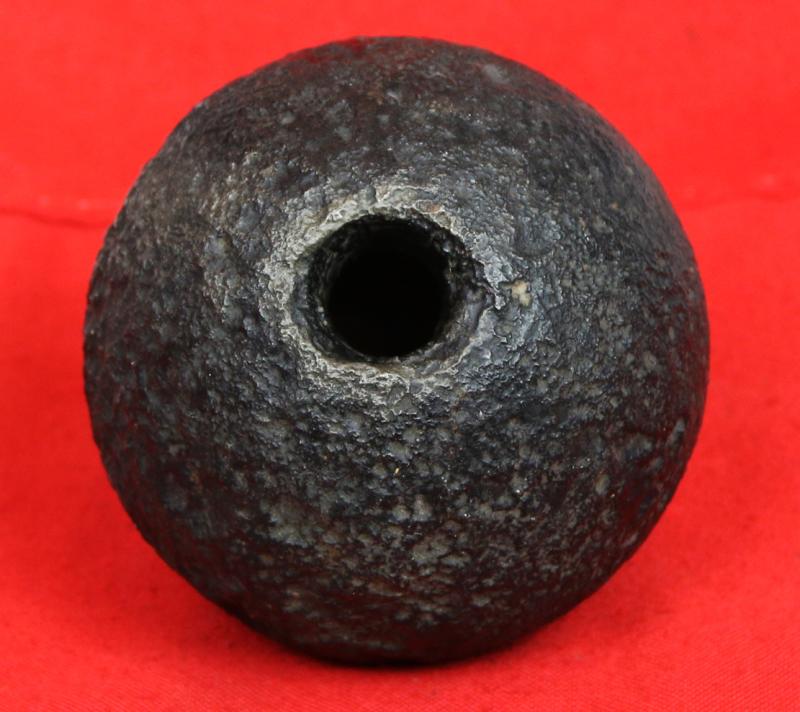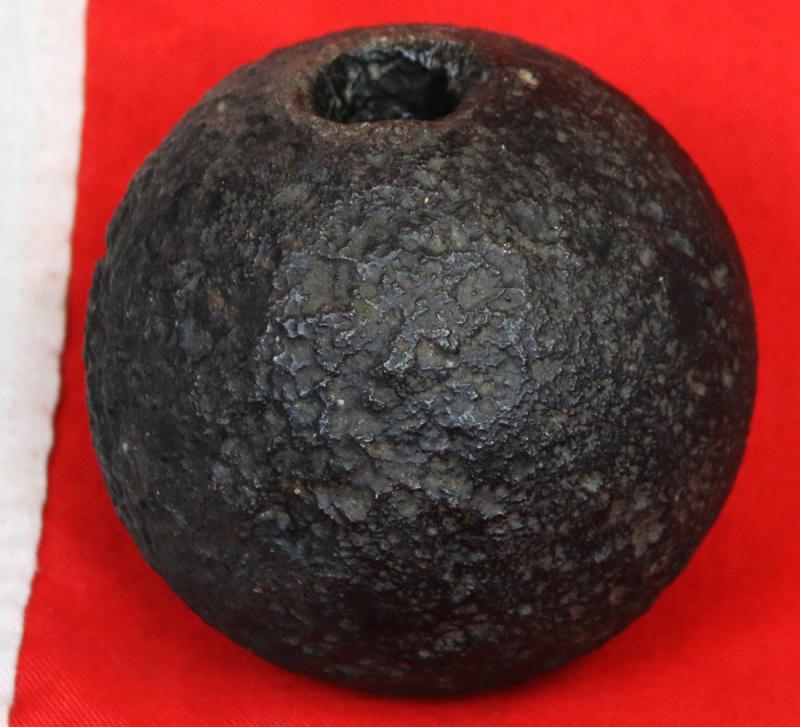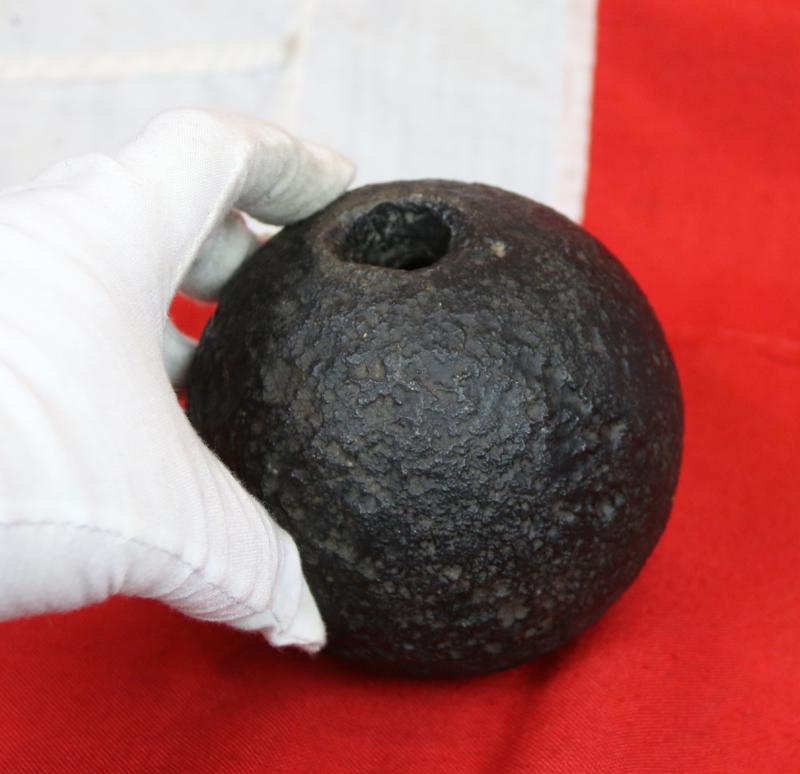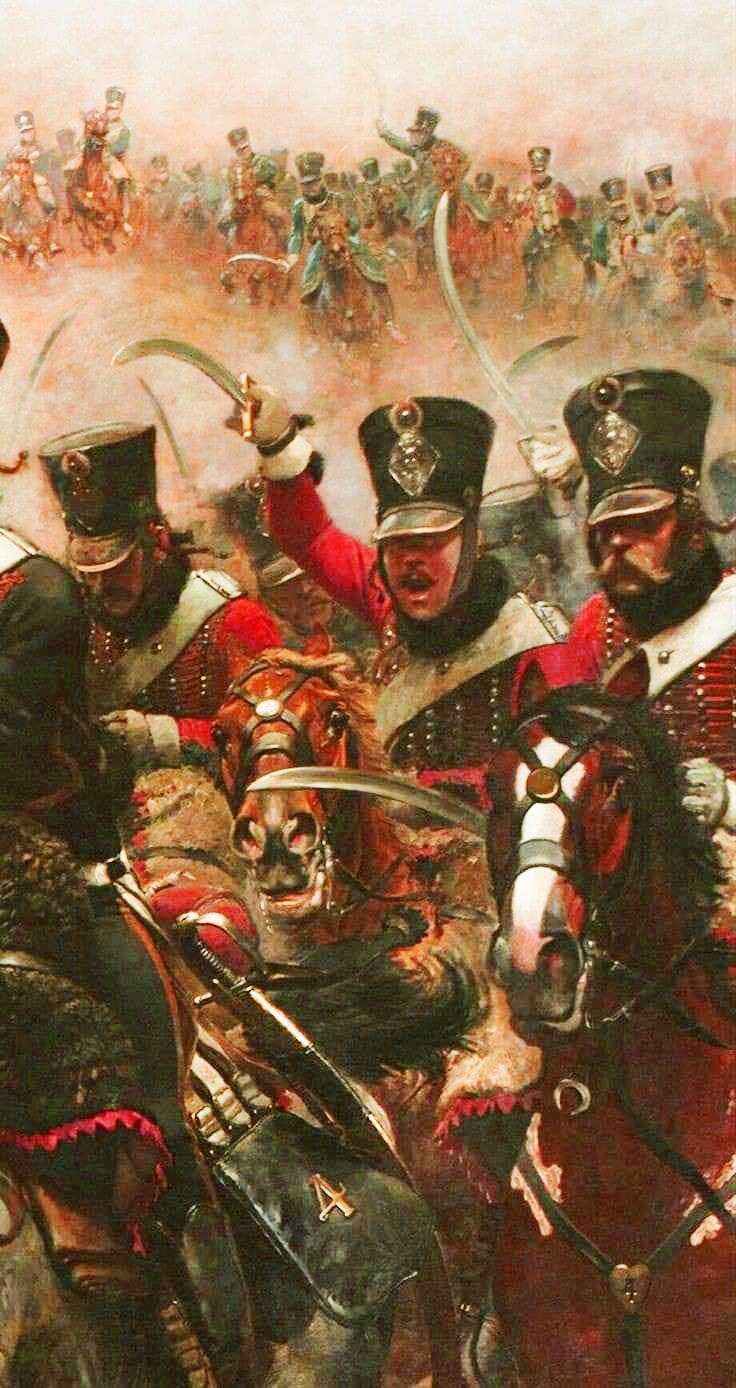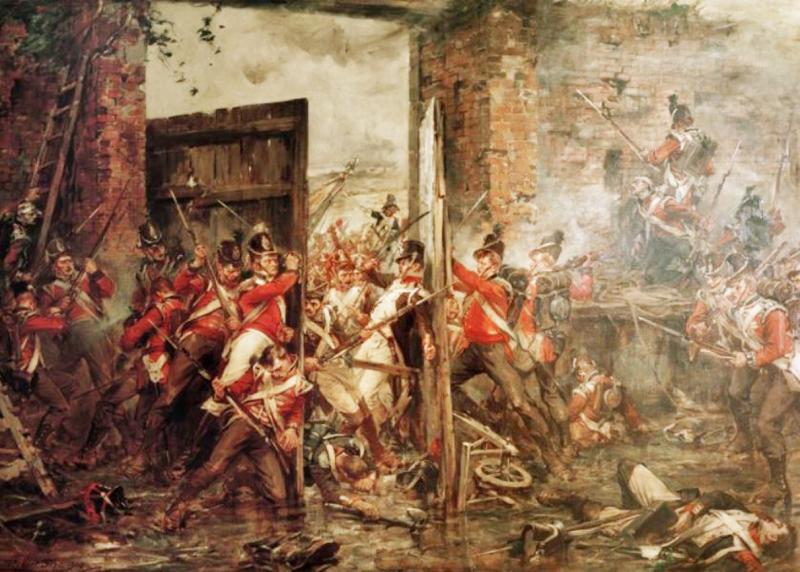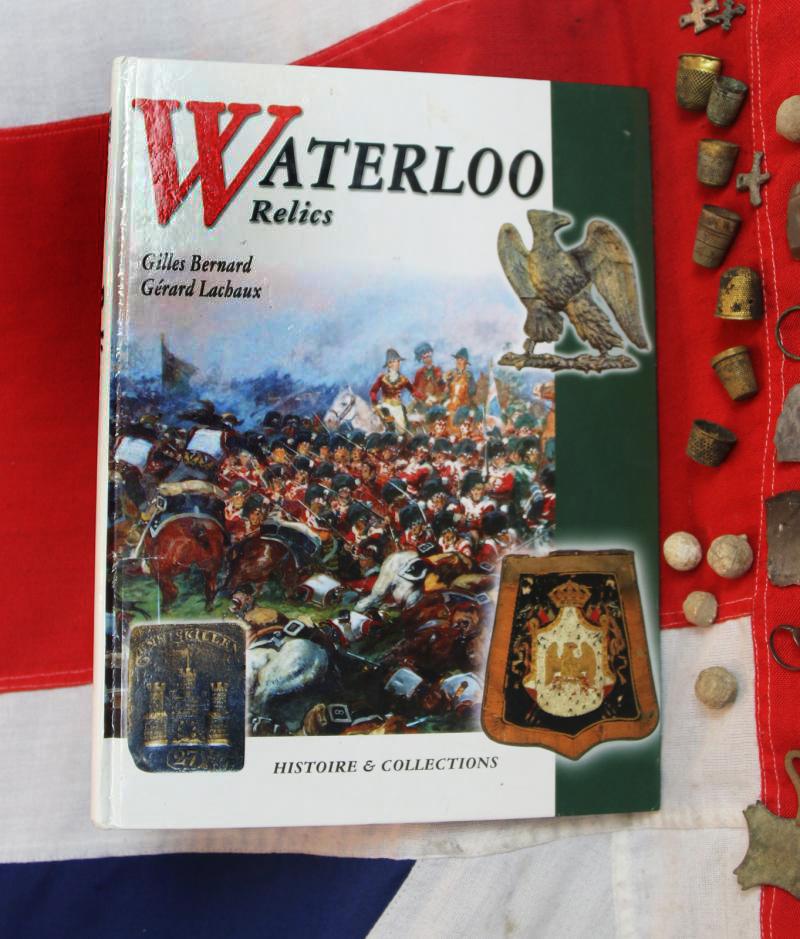5 1/2 inch Howitzer Explosive Cannon Ball. Likely Fired From Bull's Troop {at Hougemont} Royal Horse Artillery. Fired Into A Nearby Wood to Clear The French Tirailleurs {Napoleon's Light Infantry Skirmishers}. This Example Obviously Failed to Detonate
Napoleonic Wars howitzer ball recovered from a Waterloo excavation over 150 years ago.
The battery was formed on 1 February 1805 as I Troop, Royal Horse Artillery at Colchester, Essex as a horse artillery battery of the British Army. Captain Robert Bull was appointed to command and he took it to the Iberian Peninsula in August 1809 where it served until 1814. It arrived too late for the Battle of Talavera, but thereafter took part in most of Wellington's major actions of the Peninsular War including Bussaco (1810), Fuentes de Oñoro (1811), Ciudad Rodrigo, Badajoz, Salamanca, and Burgos (1812), Vitoria, San Sebastián, the Bidassoa and the Nive (1813) and Bayonne (1814).
Captain Norman Ramsay, Royal Horse Artillery, Galloping his Troop Through the French Army to Safety at the Battle of Fuentes d'Onoro, 1811
Its most famous action during the Peninsular War occurred at the Battle of Fuentes de Oñoro on 5 May 1811 when it was temporarily under the command of Lieutenant Norman Ramsay.a The troop was surrounded by French cavalry and cut off from the main force. With the guns limbered up and swords drawn, they charged through the surprised enemy horsemen thereby saving themselves from being captured.5
Armed with six 5+1⁄2-inch howitzers,b it took part in the Hundred Days Campaign in 1815. Early in the Battle of Waterloo it was ordered to support the garrison at Hougoumont. Firing shrapnel over the heads of friendly troops, in 10 minutes it cleared a nearby wood of French tirailleurs, much to the satisfaction of Wellington and Frazer (commander of the horse artillery). It then took part in the advance to Paris and joined the Army of Occupation. Napoleonic period
A tirailleur (right) and a voltigeur of the Young Guard.
In the wars of the French Revolutionary and Napoleonic periods, the designation "tirailleur" was a French military term used at first to refer generically to light infantry skirmishers.1 The first regiments of Tirailleurs so called were part of the Imperial Guard of Napoleon I. By the fall of the Empire, some 16 regiments had been created. The Guard Tirailleurs were usually grouped as part of the Young Guard, along with their sister Voltigeur regiments.
The Guard Tirailleur regiments were disbanded during the reorganization of the French Army in 1814 by the new royal government. On 28 March 1815, during Napoleon I's short-lived return to power (the Hundred Days), Regiments 1-8 of the Guard Tirailleurs were officially re-raised. Only the 1st and 3rd Regiments actually took the field for the Waterloo campaign. All regiments of Imperial Guard Tirailleurs (along with the rest of the Guard) were disbanded following the Emperor's second abdication.
In commemoration of its performance in the Peninsular War and at the Battle of Waterloo, the Honour Title "Bull's Troop" was officially granted to the battery on 13 October 1926
These 5.5-inch howitzers are typical of Napoleonic field artillery. A British battery would have five cannon and one howitzer. Howitzers tossed exploding shells on high trajectories but came into their own when the British invented shrapnel shell.
The barrel in front is a heavier version of the same weapon intended to fire the same shell over greater ranges with bigger charges.
The weapon on the carriage was actually made at Woolwich in 1814 and is back at Woolwich today, displayed in Firepower, which is on the former Woolwich Arsenal site.
Code: 25835
745.00 GBP

